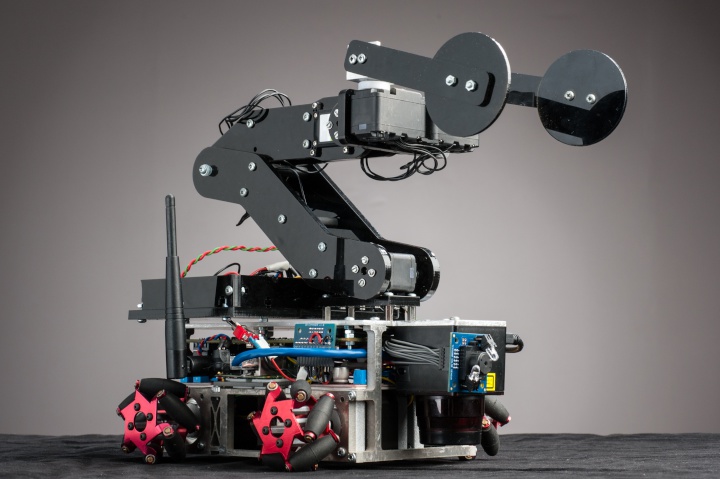Workforce robots on the horizon
27 November 2017
Workforce robots on the horizon

Primary sector and manufacturing employees may find themselves with some interesting new colleagues in the next few years as researchers develop robots that can be trained to work alongside people in factories and the great outdoors.
A two-year, $2m project funded by the Science for Technological Innovation National Science Challenge Board is examining how next-generation robots can work with humans in a safe and flexible manner.
Researchers will focus on developing robots to work in small-scale manufacturing and unforgiving outdoor environments.
Such technology could become a global specialty of New Zealand robotics businesses, with great export opportunities and long-term solutions for the country’s economic needs.
The interdisciplinary research programme involves robotics experts from Lincoln Agritech and Scion, as well as researchers and PhD students from the universities of Auckland, Canterbury, Massey, Otago, Victoria and Waikato.
The programme is laying the groundwork for follow-up projects over the next few years that will focus on making New Zealand a competitive country for the production and use of robots in small-scale, flexible manufacturing businesses and challenging environments such as those found in agriculture and forestry.
“We will advance the science required for a new generation of industrial robotic solutions,” says Lincoln Agritech Group Manager in Precision Agriculture, Dr Armin Werner.
“These robots can provide enormous benefits to the primary and manufacturing sectors. Both industries require fast adaptation to different products and markets, and constant responsiveness to changing outdoor environments.
“The robots can assist with complex tasks such as pruning tree or vine crops, safely felling trees on steep slopes or assembling small batches of appliances on demand.”
To develop the technology, researchers will investigate how sensors and artificial intelligence can allow robots to perceive and understand their surroundings, flexibly handle new situations through learning or training by humans or other robots, and work in challenging environments.
All the while, the robots will work collaboratively with humans, behaving safely around both people and animals.
“The robots will be adaptable and create new solutions for the often small-scale and highly flexible production environment in New Zealand and many other comparable regions in the world,” says Dr Werner. “The targeted innovation represents a major shift from the notion of isolated robots solving single tasks.”
The technology is expected to help the country’s industries thrive globally and create an international hub for innovative robotics development.
To ensure industry-informed science, project coordinators Dr Werner, Associate Professor Will Browne of Victoria University of Wellington, and Associate Professor Johan Potgieter of Massey University, will work closely with an industry advisory group that includes robot manufacturers, food and manufacturing industries, Māori businesses and Government funding agencies.
Ends


 FSCL: Financial Ombudsman Service, FSCL, Rated Accessible And Fair Dispute Resolution Service In Independent Review
FSCL: Financial Ombudsman Service, FSCL, Rated Accessible And Fair Dispute Resolution Service In Independent Review The Reserve Bank of New Zealand: Monetary Policy Affects Some Parts Of The Economy Differently - RBNZ Analytical Note
The Reserve Bank of New Zealand: Monetary Policy Affects Some Parts Of The Economy Differently - RBNZ Analytical Note Tātaki Auckland Unlimited: Iconic Auckland Eats 2025 Top 100 Dishes Revealed After Record Number Of Nominations
Tātaki Auckland Unlimited: Iconic Auckland Eats 2025 Top 100 Dishes Revealed After Record Number Of Nominations Hugh Grant: What Is Cloud Migration And How Does It Work
Hugh Grant: What Is Cloud Migration And How Does It Work Property Council New Zealand: Hiwa Recreation Centre Takes Top Award At 2025 Property Industry Awards
Property Council New Zealand: Hiwa Recreation Centre Takes Top Award At 2025 Property Industry Awards Great Journeys New Zealand: Scenic Plus Winter Menu Launched
Great Journeys New Zealand: Scenic Plus Winter Menu Launched


